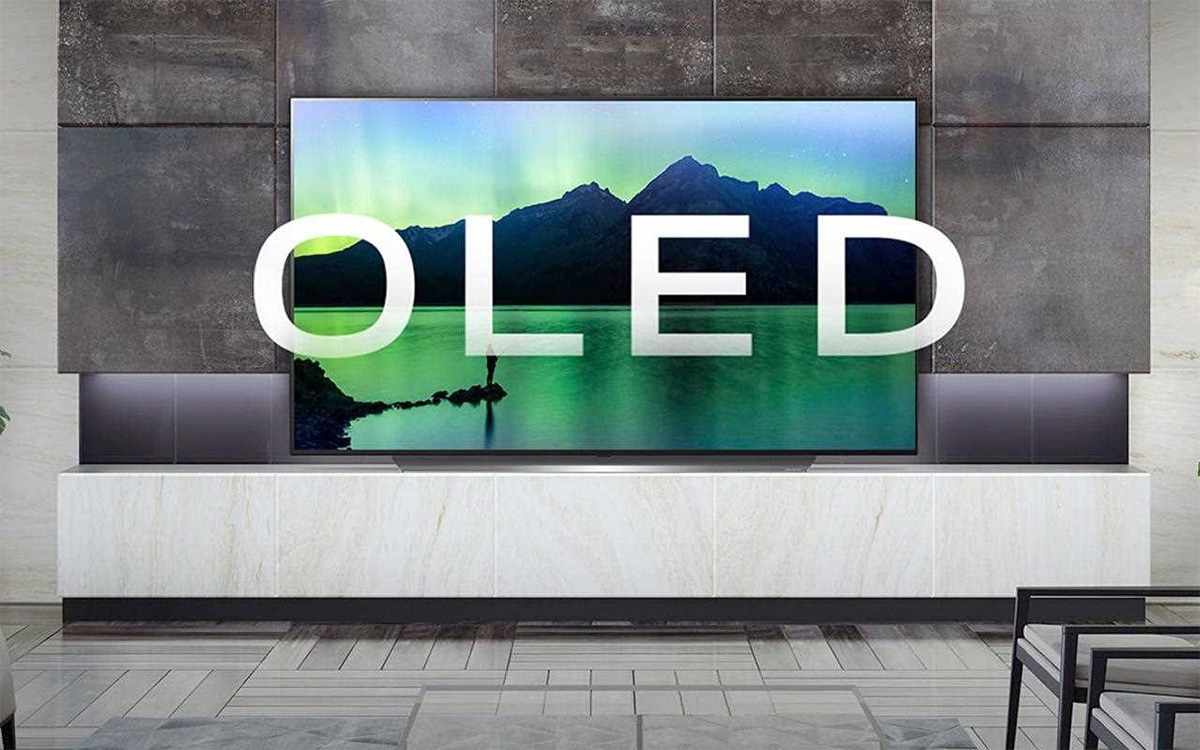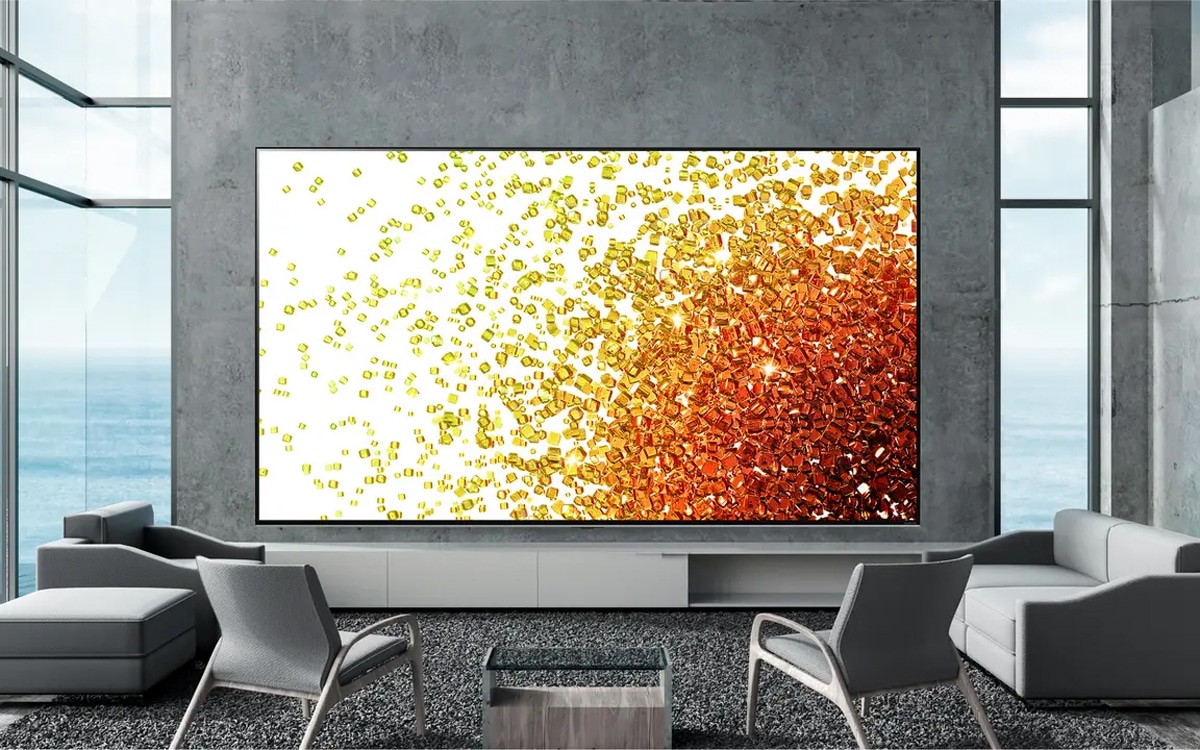The only problem is, with so many unique TV technologies competing for our attention in the marketplace, it can be tough to tell each of the technologies apart. For instance, what is the difference between QNED, QLED, and OLED TVs? Are the differences substantial? And which of them is best for you?
Often find yourself scratching your head, trying to decipher some of the intricacies of the modern TV industry? Want to keep up with the conversation when it comes to QNED, QLED, and OLED TVs? Then you’ve come to the right place! In this article, we’re going to take a deep look at these unique TV technologies. To find out what makes them unique!
What Are The Differences Between QNED, QLED, And OLED?
It’s worth noting that these three abbreviations are used to refer to three very specific TV display types. QNED, QLED, and OLED TVs all use different display technologies to render an image. This difference in display type is what helps to differentiate the three types of TV.
When most people think about differing TVs, they tend to think of different resolutions and screen sizes. After all, most people have dreamt, at some point or another, of having a bigger TV! For many people, it comes as a surprise to learn that modern TVs use all kinds of differing display technologies.
The major difference between QNED, QLED, and OLED TVs is their unique display technologies. Each of these TV types refers to a different TV display technology used to render images on screen!
But what do each of these display types refer to? And why would someone pick one display type over another? Let’s take a look now!
What Is An OLED TV?
One of the most common display types on the market is the beloved OLED. OLED TVs differentiate themselves directly from other popular display types thanks to their lack of a backlight. Most conventional TVs employ a backlight, installed behind the display, which is responsible for pushing an image out to the TV viewer! OLED TVs forgo this light for a totally different method of illumination!
OLED refers to “Organic Light Emitting Diode”. This isn’t just a jumble of buzzwords, as it refers directly to the self-illuminated pixels used by an OLED TV. Each of the millions of pixels that make up an OLED screen are able to produce light and switch themselves on and off as needed. This means there’s no need for a backlight at all.
What Are The Benefits Of An OLED TV?
We mentioned just above that OLED TV pixels are able to turn on and off as needed. This is beneficial because it allows OLED TVs to create truly deep black values. This allows OLED TVs to produce realistic contrast. This helps every on-screen element to pop!
The greater contrast offered by OLED TVs also means that they are some of the best screens to use alongside HDR technology. HDR technology increases the total number of colours that can be recreated by a TV display. The extra contrast from an OLED display helps to ensure these colous look their best!
OLED TVs are also great for busy households. Because the pixels are self-illuminating, they are able to project light at much wider angles. Ordinary TV backlights are often limited in how wide they can project their light. This means that, if you wanted to host a family movie night, everyone would be able to see everything on-screen without issue!
OLED TVs are also much more lightweight than other competing TVs, thanks to the lack of a backlight. This is great for those looking to move home frequently. And those who want to mount their new OLED TV to the wall!
What Is A QLED TV?
QLED TVs operate very differently from OLED TVs. Instead of self-illuminating pixels, the unique technology employed in QLED TVs is quantum dots! Once again, we understand that quantum dots sound totally made up. They sound like something out of a best-selling sci-fi novel! However, their unique nature helps to make QLED TVs totally worth paying attention to.
Quantum dots are imperceptibly small semiconductors responsible for creating the images on a QLED TV screen. Millions of quantum dots are packed into the screen and then subjected to electricity. When an individual quantum dot is electrified, it emits light of a highly specific colour. Specific amounts of energy result in specific colours.
What Are The Benefits Of A QLED TV?
Quantum dots are able to recreate specific colours with far more accuracy than any other TV display technology. When the millions of quantum dots work together in tandem, they’re able to create eye-popping images! If you want your favourite films and shows to look even more real, then a QLED TV is a great investment.
QLED TVs are also perfect for HDR imagery. The increased abilities of quantum dots to render specific colours allow HDR images to look incredibly accurate. If you’re a film fan, you’ll likely want your favourite titles to look exactly as they did when they were first released in theatres. QLED TVs help to easily facilitate this!
In order to make images visible, QLED TVs need to make use of a backlight. Luckily, the inclusion of a backlight allows QLED TVs to achieve much higher brightness levels than OLED TVs. Greater brightnesses really help to make qunatum dot technology shine!
QLED TVs usually have a much higher price tag than other TVs, but the visual benefits more than make up for it!

What Is A QNED TV?
One type of modern TV that very often leaves people mystified is the elusive QNED TV. Luckily, QNED TVs are very easy to understand.
We discussed earlier how QLED TVs operate through the use of an LED backlight that shines light through the quantum dot layer. It’s worth noting that, while the LED backlight helps to project the image out to the viewer, it can often produce a little bit too much light. The light from an LED can very often bleed through the image on a QLED screen, which can result in dampened contrast.
QNED TVs operate very similarly to QLED TVs. They have a layer of quantum dots, and a backlight array to shine light through them. As well as those layers is an extra LG NanoCell layer, just in front of the quantum dots. This extra layer is responsible for identifying and absorbing light that bleeds through from the backlight. This of course helps QNED displays to create much sharper contrast without sacrificing the immense colour range of QLED displays.
QNED technology (Quantum Nano-Emitting Diode) was introduced by LG. Thus, you’re more likely to find QNED TVs under the LG banner. However, LG also produced QNED screens for other major manufacturers such as Samsung!
What Are The Benefits Of A QNED TV?
The greatest benefit of a QNED TV is the addition of the LG NanoCell layer. This simple but effective innovation helps quantum dot technology to shine better than ever before. The increased colour gamut of quantum dots, combined with the increased contrast created by the NanoCell layer helps to make QNED TVs some of the best on the market.
Knowing that excess light will be blocked means you can enjoy content on your QNED TV at much higher brightnesses. QNED TVs are thus great for daytime TV watchers, or for living rooms subjected to plenty of daylight.
Perhaps one of the greatest benefits of QNED TVs is that they are much more affordable. When compared to OLED and QLED TVs, QNED TVs make for a great budget option. This comes despite the fact that QNED TVs offer the best of both OLED and QLED features. If you’ve been on the fence about buying a QLED TV, but you can’t face that hefty price tag, then a QNED would be perfect.
Which Of The Three TVs Is Best?
Now that we’ve taken our deep dive into these competing display technologies, you’re likely wondering: “Which of the three stands out on top?”
Your choice between the three displays will depend on what you want from your new TV.
If you’re looking for an all-around TV that is perfect for the whole family, then an OLED TV would be the best option. The pixel technology employed in OLED TVs makes them easy to watch from any angle. And when it does come time to watch, the increased contrast helps to make every image all the more vibrant. OLED TVs are also great for gamers. The independent pixels allow for fantastic refresh rates that reduce input lag significantly.
However, OLED TVs are at a much higher risk of developing screen burn. This is an issue that involves static images quite literally burning into the TV screen. This is caused by the pixels of an OLED TV being forced to maintain an image, which leads them to burn out at an increased rate. QLED and QNED TVs are not susceptible to screen burn thanks to their use of a backlight!
The use of a backlight in QLED and QNED TVs helps them achieve a far greater level of brightness than OLED TVs. For immersive viewing of the latest blockbusters, you can’t go wrong with more varied colour palettes and higher brightness levels. Higher brightness is also great for living rooms that face the sun during the brighter hours of the day.
QLED and QNED TVs aren’t quite as great for gaming, however. Though they are able to render digital worlds in much greater detail, they often feature much higher response times. This can make controlling a game on a QLED or QNED TV feel a little unwieldy!
QNED, QLED, and OLED TVs offer very different benefits. OLED TVs boast greater contrast, while QLED and QNED TVs offer wider colour gamuts. Choose the TV that best suits your personal tastes!
It’s not possible for us to claim that one of these display technologies is definitively the best. Each display type offers a different set of benefits and drawbacks. As such, you should be sure to consider the benefits of each type, to find a TV that best suits your individual needs!
Frequently Asked Questions
What Is The Difference Between QNED, QLED And OLED?
The major difference between QNED, QLED, and OLED TVs is the technology employed in their displays. OLED TVs make use of self-illuminating pixels that can create great contrast in every image. QLED TVs can create more accurate colours, and achieve much higher brightnesses. QNED TVs are a great and affordable middle ground between the two!
Which Is Better OLED Or QLED?
It’s not possible to say which of the two TVs is better. They both offer very different benefits that make them solid options. OLED TVs are able to achieve true black values by switching individual pixels off when needed. This helps to create a sharper contrast. QLED TVs, on the other hand, are able to leverage quantum technology to create more lifelike colours.
Do OLED Or QLED TVs Last Longer?
Both OLED and QLED TVs are able to last upwards of 10 years. All you need to do is take good care of them. However, it’s worth mentioning that OLED TVs are at greater risk of screen burn. If you don’t take good care of an OLED TV, it could be damaged in just a few years. Repairing screen burn is incredibly expensive!
What Are The Disadvantages of OLED TV?
Because OLED pixels are responsible for creating their own light, they are severely limited in exactly how much light they can create. This means that OLED TVs cannot reach brightness levels that compete with QLED or LED TVs. If you need greater brightness levels, then OLED may not be the right choice for you!






0 Comments